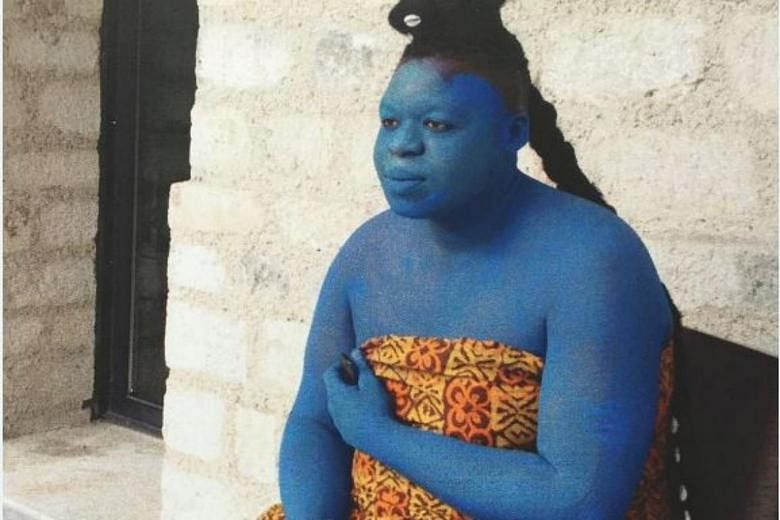REVIEW / DANCE
AND SO YOU SEE… OUR HONOURABLE BLUE SKY AND EVER ENDURING SUN… CAN ONLY BE CONSUMED SLICE BY SLICE… (SINGAPORE INTERNATIONAL FESTIVAL OF ARTS)
Robyn Orlin with Albert Ibokwe Khoza
Sota Studio Theatre
Thursday
The ellipses in choreographer Robyn Orlin's distinctively wordy title, And So You See… Our Honourable Blue Sky And Ever Enduring Sun… Can Only Be Consumed Slice By Slice..., are perhaps an indication of the choreographer's manifold sentiments about her native South Africa - the injustice, danger and sliver of hope that she must see.
While spirited, these seem to trail off as they overlap in her 2016 production, which features ebullient South African performer Albert Ibokwe Khoza.
And So You See… centres all the contradictions of a post-apartheid South Africa on one body.
Khoza's is a body that is an enigma. It is at once masculine and feminine, regal yet vulgar, burdened but free.
His operatic singing often escalates into wild shrieks and his dancing descends into fitful jerks. The disquiet is inescapable.
With his back against the audience, Khoza is flanked by cameras in front of and above him, which zoom in to make him larger than life, but also reduce him to a two-dimensional image.
The performer thus sees himself as the audience sees him as he oscillates between the reality of performance and the trance of the spiritual.
He begins the evening shrink- wrapped in plastic as he experiences what seems to be a bodily awakening.
The bobbing of his head resonates through the folds of his belly.
His hips circle and his spine snakes with pleasure.
He stuffs himself with oranges, grunting gleefully as juice splatters all over the floor.
Flirting with danger, he uses a knife like a toothbrush, its blade grazing his lips. This same knife then comes perilously close to his flesh as he seductively removes his plastic cocoon.
Khoza then transforms into a Nubian queen, adorning his face ceremonially with paint and his 10 fingers with lavish rings.
Gold and diamonds are in abundance in South Africa, he says. Such opulence segues into the grotesque as Khoza preens himself to negotiate with an on-screen Vladimir Putin, offering to trade weapons for jewels and money for oil.
Here is a monster, swollen with the pressures of the world.
Khoza dons a skirt of animal hide, then inverts it to form a multi- coloured plumage of feathers, which both attracts and defends him from his invisible enemies. Although his wingspan is long, he cannot fly.
This work has many references throughout to issues such as genderbased violence, white supremacy and an iron grip on tradition.
While some of these are pointed, they often trail off as Orlin has a lot to say, but does not seem to finish her sentences.
Khoza is both everything and nothing.
He sings a moving lamentation at the work's conclusion while his body, painted in blue, holds up an image of a child soldier wearing fairy wings and holding a gun that is as tall as he is.
The meeting place for such innocence and harm is for a moment, the landscape of Khoza's full belly. Then he fades into the darkness.

